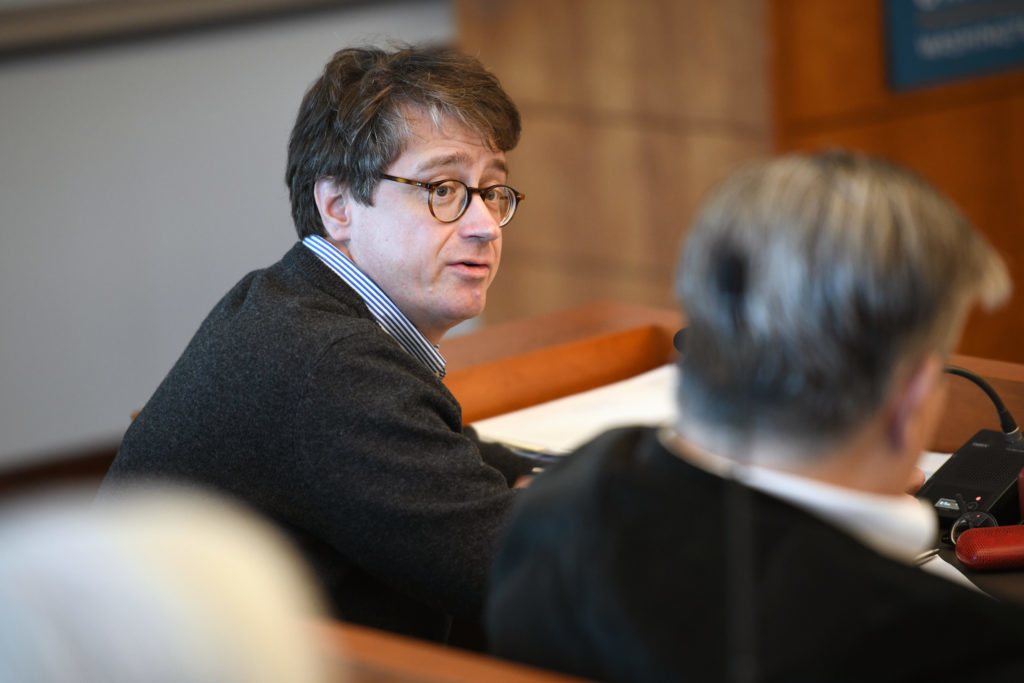Officials are moving research processes online amid a renewed focus on the efficiency of GW’s research initiatives.
The Office of the Vice President for Research will transition to an electronic research compliance system, which will allow researchers to track the process of their applications and minimize paper trails, within the next year and a half. Faculty and experts said this type of system can better manage the workflow of ongoing projects because an online system is more accessible and more frequently updated than paper systems.
Sheila Garrity, the associate vice president for research integrity, said the committee that selected the electronic system included representatives from OVPR, the Division of Information Technology, faculty and research staff. Members of the committee spoke with other institutions using similar electronic tools before deciding on a platform to ensure the model would increase efficiency, she said.
Garrity said the University is planning to launch online modules to manage research processes for projects using human subjects, animals and biological agents, and to teach conflict of interest compliance. Modules for research involving human subjects will be the first project, to be launched by the end of the year, she said.
“Administrative systems and processes must keep pace as our research enterprise grows,” she said in an email.
Garrity declined to say how faculty members were included in picking the system and what system the office will use. She also declined to say how much the new system will cost.
The office announced that a faculty task force would work to review the research procedures within OVPR in February. Faculty members said they hoped the task force could improve research operations, like applying for grants and receiving general updates.
The electronic system was first announced earlier this month when officials launched a new website tracking each of University President Thomas LeBlanc’s five major goals, one of which is research.
Harald Griesshammer, a professor of physics, said there is a lack of communication between OVPR and researchers under the current compliance system. He said researchers are often frustrated because it’s not always clear who is handling each part of a grant application, which an electronic system could make clear.
“I have no idea who is responsible in the administration, I have no idea which signatures are missing and all of this,” Griesshammer said.
Griesshammer said GW is lagging behind many other peer institutions, as most schools have already transitioned to an electronic research compliance system in the last 10 years. This makes it difficult for University researchers to collaborate with institutions who use these types of systems, as the current system is much slower, he said.
Of GW’s 12 peer schools, eight use an electronic research compliance system.
“We are absolutely falling behind,” he said. “When I’m submitting collaborative grants and I tell my colleagues from other universities what’s happening here, they automatically give me 15 days more to process everything because they know everything is working differently at GW.”
Experts said an electronic research compliance system will allow researchers to track a project’s progress, whereas conducting work on paper can cause delays and doesn’t allow for frequent updates for investigators on grant requests or staff hires.
Kathy McClelland, the research compliance office director at Stanford University, said an electronic system can allow faculty members to spend more time developing curriculum and assisting with independent research projects – and less time on clerical work.
“It was a rather laborious process because everything had to be transmitted, and the new system has been very dependable,” McClelland said. “The clerical tasks have now been replaced by high-level tasks.”
McClelland said with an electronic system, which Stanford implemented 10 years ago, the “paper burden” went away, but the system constantly has to keep up software updates. She said each time there is a change in federal policy on research practices, coding experts have to update the entire system.
“It doesn’t happen overnight, it’s a long process and it’s never really finished,” she said. “Once you get something completed, it’s usually a couple versions behind. In that sense, there’s a lot more challenge in staying current.”
Jean Chan, the associate director of the department of contracts and grants at the University of Southern California, said USC began using an electronic compliance system about five years ago. She said under the new system, it’s easier to find which staff members are responsible for specific tasks, which can sometimes be unclear in masses of paper.
“With the system, it breaks down the roles and responsibilities for each level, like an administrator has to be the one working to prepare the application, then it goes to the department level,” she said.
Leah Potter contributed reporting.





